
Bruno Welter Giraldes
PhD in Oceanography, Research Assistant Professor
Awarded Grants
For more information or to discuss partnerships >>
2021-2025
Coral Transplantation and coral nursery farm – Developing coral reef restoration facilities in Qatar.
Funded by









Lead Institution
Description: In this project we are increasing the the TRL (technological Readiness Level) of the aquaculture and gardening technologies for several coral species from Qatar. For each one of this species we are optimizing the technologies related to fragmentation (ideal sizes and cutting methods), husbandry (ideal light intensity and color, feeds and water conditions for maintaining the coral pieces as a "nursery zone" after the fragmentation. After healing the coral fragments are outplanted in different marines sites using coral-gardening methods for describing the ideal sites for cora reef restoration plans. I am the Co-LPI (Lead Principal Investigator) of this project.
Funding source: Qatar Gas /(Grants amount confidential)
Lead Institution: Environmental Science Centre, Qatar University, Qatar.
Partner Institution: AFRC (Aquatic and Fisheries Research Center) from the ministry of Environment of Qatar.
Proposed Outcomes: Around 10.000 coral fragments will be outplanted in different marine sites. A long-term underwater monitoring will be implemented for 4 years. A report describing the ideas suggested technics for further coral reef restoration projects. A documentary regarding the public awareness and at least 3 research articles describing the important results.
2019-2022
The Biomimicry of the “Mushroom Forest Artificial Reef” -Experimental strategies for coral reef restoration and fish stock augmentation in Qatar
Funded by
Co-Funded by



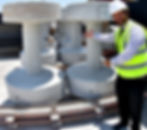

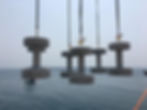
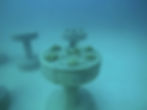





Lead Institution
Partner Institution
Description: Inspired in the shape and material from nature and designed based in the biomimicry concept this project aims increase the TRL (technological Readiness Level) of a new technology for subsea construction. A environmentally friend artificial reef designed for restoration of marine areas, including increase the fishing stock, coral "gardening" and control coastal erosion. I am the LPI (Lead Principal Investigator) of this project and the owner of the patent.
Funding source: Qatar University (QU) Internal Funding Program /Approx. U$ 300.000,00
Co-Funding: Smeet Precast; and SIKA
Lead Institution: Environmental Science Centre, Qatar University, Qatar.
Partner Institution: The Queensland University, Australia.
Outcomes: 1 Patent. The patent of the new technology already was granted. The first experiments in the wave pool and flume pool was performed at the coastal engineer department in Australia.
2019-2021
Innovative In situ Biotechnology for Continuous Water Quality Monitoring on the Qatari Marine Environment
Funded by

Co-Funded by
TOTAL PETROLEUM




Lead Institution
Partner Institution
CNRS and
ADERA
Description: This project aims to validate the use of the HFNI valvometer for water monitoring. A new-generation of remote technique installed in oyster shells to identify on real time the physical or chemical stressors based in the closing and opening of the valves. In this study I am the PI (Principal Investigator) of the work package related to ecological patterns and for the survey of biological material.
Funding source: Qatar Foundation – NPRP11S-0115-180308 - The value is Confidential
Co-Funding: TOTAL Petroleum
Lead Institution: Environmental Science Centre, Qatar University, Qatar.
Partner Institution: CNRS and ADERA, France.
Outcomes: This project just started in the second semester of 2019 and the biological data will be collected on 2020.
2019-2021
Tar mats of Qatar Coast: Resilience to Weathering Processes and Quantification of Environmental Hazards.
Funded by

Lead Institution
Partner Institutions







Description: This project aims to understand, qualify and quantify the impact of tar mats in the coastal environment. It is a multidisciplinary study with several researchers correlating, with different approaches, Chemical physical and biological parameter. In this project I am the PI (principal investigator) responsible the ecological evaluation of the impact of Tar-mats over the gastropod assemblage in rocky shore zone.
Funding source: Qatar Petroleum (QP) Funding Program / Approx. U$1.300.000,00.
Lead Institution: Environmental Science Centre, Qatar University, Qatar.
Partner Institution: University of Alabama, USA.
Outcomes: This project just started in the second semester of 2019 and the biological data are in the collecting process.
2019- 2022
Qatari National Genetic Habitat and Environmental Bio-monitoring
Funded by

Lead Institution

Partner Department








Description: This project aims identify genetically marine species at Qatar Marine Zone using the new Oxford Nanopore technology. Creating a gene-bank about target marine species. This project is part of the Marine Collection project described bellow. Here I am the PI (principal investigator) responsible for the survey and taxonomic identification/ description of the target marine species
Funding source: Qatar Petroleum (QP) Funding Program / Approx. U$500.000,00.
Lead Institution: Biomedical Research Centre, Qatar University, Qatar.
Partner Departments: Environmental Science Centre,
Outcomes: This project started recently and the data are under analysis. Some articles are in preparation process, with at least 5 possible new species under description.
2018-2020
Does a seasonal biogeographic barrier dividing the Arabian Gulf exist? A study based in the Taxonomy, Phylogeny and Phylogeography of decapod’s biodiversity in Qatar.
Funded by
Lead Institution
Partner Institutions


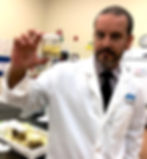







Description: This project aims use the decapods biodiversity to evaluate the existence of a biogeographic barrier isolating the West coast of the Arabian Persian Gulf. We are using genetic and taxonomic information to understand the distribution of decapods in the Gulf. A special group of animals with short life cycle and a good taxon for this aim. In this Project I am the LPI (lead Principal Investigator).
Funding source: ESC-QU Funds// QR$ 80,000.00 (Qatari Riyal)
Lead Institution: Environmental Science Centre, Qatar University, Qatar.
Partner Institutions: Regensburg University, Germany; Museum of Natural History at Oxford University, United Kingdom
Outcomes: The outcomes are in preparation
2018-2019
The potential antibacterial effect of the Marine Sponges of the Qatar Marine Zone.

Funded by


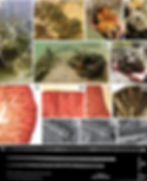



Lead Institution
Description: This project aims identify sponge species within Qatar Marine Zone and their potential antibacterial bioactivity. In this project I was the LPI (Lead Principal Investigator) and was in partnership with the Biomedical Research Centre at Qatar University.
Funding source: Qatar Foundation - UREP21-141-3-032/Approx. U$20.000,00
Lead Institution: Environmental Science Centre, Qatar University, Qatar.
Partner Departments: Biomedical Research Centre; Biomedical Science Department; Department of Chemistry and Earth Sciences
Partner Institution: University of New Brunswick, Canada.
Outcomes: 1 article in publishing process; 1 report with the results and list of species. In the first ecosystem approached for the identification/description of the sponge biodiversity, we identified two new species. In the main article produced we described these two new species and their potential antibiotic bioactivity.
Partner Institution



2016-2020
The pearl oysters: From national icon to guardian of Qatar marine environment.
Funded by









Description: This project aims describe several aspects of the iconic pearl oyster Pinctada imbricata radiata at the Arabian-Persian Gulf. A multidisciplinary study including genotoxicity, physiology, chemical contaminants and ecology. In this project I was invited as PI (principal Investigator) for the work package about the ecology of the population of this species.
Funding source: Qatar Foundation - NPRP9-141-3-032/Approx. U$ 796.432,00
Lead Institution: Environmental Science Centre, Qatar University, Qatar.
Partner Institutions: CEFAS, United Kingdom; McGill University, Canada; MAERSK Oil, Qatar.
Outcomes: 1 article; X articles in preparation. Observing animals in aquarium after the capture I recorded for the first time an active benthic displacement of this species. Named as The Sea-Silk displacement this species display a movement similar to Spiderman, in a sequence of actions it produces a single thread, attach this thread in the substrate, drags itself, discard the used threat and produce a new thread for a new sequence of movement.
Lead Institution
Partner Institutions

2015-2018
Ecological processes underlying ecosystem function in arid mangroves.

Funded by
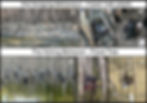

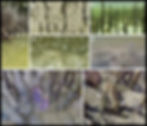



Lead Institution
Description: This project aimed understand better one of the most extreme ecosystem on earth, the arid mangrove in the west coast of the Arabian-Persian Gulf. I was invited as associated researcher for the sample collection and accidentally it resulted in a publication about behavioral biology.
Funding source: Qatar Foundation - NPRP 7 - 1302 - 1 - 242 / Approx. U$900.000,00
Lead Institution: Environmental Science Centre, Qatar University, Qatar.
Partner Institution: Bangor University, United Kingdom.
Outcomes: 1 article. An article that I published after two years of monthly visits to the two main mangrove ecosystems in Qatar. I observed and recorded the first active fishing behaviors of an entire population of the tree-climbing crab Metapograpsus messor. A behavior that drove me to the description of another behavior, the use of the pneumatophore-borne vibration to identify the target preys. I also described the short trophic chain where this behaviors are related and the ciclic sequence acording with the tidal levels.
Partner Institution

2014-2017
The impact of static fishing gear over the offshore oyster beds in Qatar

Funded by

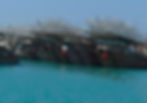







Institution

Description: This project aimed identify the effect of the fishing activity over the historical oyster beds in the offshore areas in Qatar. I was invited as associated researcher for the sample collection and was directly responsible for the data analysis, and preparation of the main published article.
Funding source: Qatar Foundation - NPRP 7 - 1302 - 1 -242 / Approx. U$900.000,00
Institution: Environmental Science Centre, Qatar University, Qatar.
Outcomes: 1 article; and indirectly the development of a new technology. The article described the impact of the main fishing activity used in Qatar Marine Zone. We demonstrated the massive impact that the retrieval method resulted over the oyster beds in the offshore sites. Indirectly this study onside the patent of a new retrieval method based in a new technology.
2015-Present
The Biological Bank / A Marine Collection in Qatar
Funded by
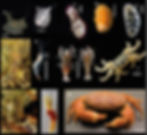


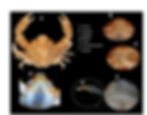




Institution
Description: This project I am the LPI (Lead Principal Investigator) responsible for the entire conception and development. It aims list and conserve voucher specimens from the marine zone of Qatar. Following the conservation protocol of Natural history museums. Creating a Marine Collection listing the biodiversity of Qatar, the main database for ecological study and ecosystem management .
Funding source: ESC-QU Funds. U$ 100,000.00 (US-Dollar).
Institution: Environmental Science Centre, Qatar University, Qatar.
Outcomes: 3 articles published; 5000 specimens; 2 submitted. Among the published articles there is the biological and ecological database of Portunus segnis; the description of Coleusia janani a new species of crab named in tribute of the research vessel Janan at the ESC; and the description of a new occurrence of the benthic ctenophore Coleoplana bentoplana meteoris in Qatar. Among the articles in preparation there is the description of two new species of sponge, and their potential antibiotic bioactivity.

2012-2014 - MAArE Project
Environmental Monitoring of Arvoredo's archipelago and surrounding
Funded by

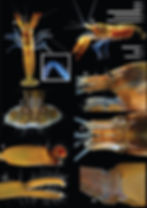
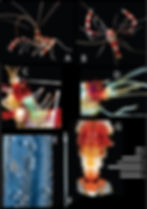
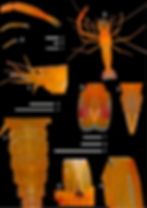

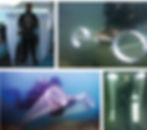





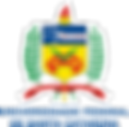
Institution
Description: A large monitoring program (www.maare.ufsc.br/o-projeto/) that aimed describe several aspects of the biological, chemical and physical characteristics of the Arvoredo's non-take zone, a group of Islands in the South of Brasil. My work package was the underwater monitoring and description of the decapods assemblage; searching for the anthropogenic effects over it's community. I also supported in the study of demersal Plankton.
Funding source: Petrobras - Oil Company in Brazil /Approx. U$350.000,00
Institution: Crustáceos e Plânctons Lab in the Departamento de Ecologia e Zoologia at Universidade Federal de Santa Catarina. (UFSC) Brazil.
Outcomes: 2 Field Protocol; 1 Patent; 2 book chapter; 2 articles. Protocols describing the method to be applied in furhter long-term monitoring program and the first database to guide the biodiversity assessment of decapods and demersal plankton. One article reported new occurrences and highlighting the bio-invasion of the mediterranean shrimp Stenopus spinosus into Brazil (see resume); Another article recording the description of a new shrimp species named as Lysmata arvoredensis in tribute to the Arvoredo Islands. One book about some important crustaceans in the region (resume) and another large book reporting the entire monitoring project.
2006-2012
Decapods from tropical reef at Northeast of Brazil
Funded by




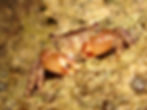






Institution
Description: This project was related to my Post-Graduation studies (MSc and PhD). During this time I searched for stakeholders for funding, create the methodology, collected the data throughout several nocturnal scuba dives in coral caves, analyzed the data and published the results. Close supervised by Prof. Petrônio Alves coelho, which unfortunately passed away before the conclusion of the project
Funding source: Capes and Facepe / Approx. U$30.000,00
Co-Funding: Mormaii, Zoae and Acqua Viva Diving centres (In Kind contribution)
Institution: Museu Oceanográfico at the Universidade Federal de Parnambuco (UFPE) Brazil.
Outcomes: The MSc and PhD Thesis and 7 articles (resume). Highlighting the article describing and naming the most important economic lobster resource in Brazil, Panulirus meripurpuratus, previously named as Panulirus argus from Brazil. As well as, a book chapter about some important benthic species in the studied region. An article describing the list of shrimps from tropical Brazil. Also the article describing the nocturnal zonation with different assemblages in coastal reefs. Among others published and some data still in publishing process





